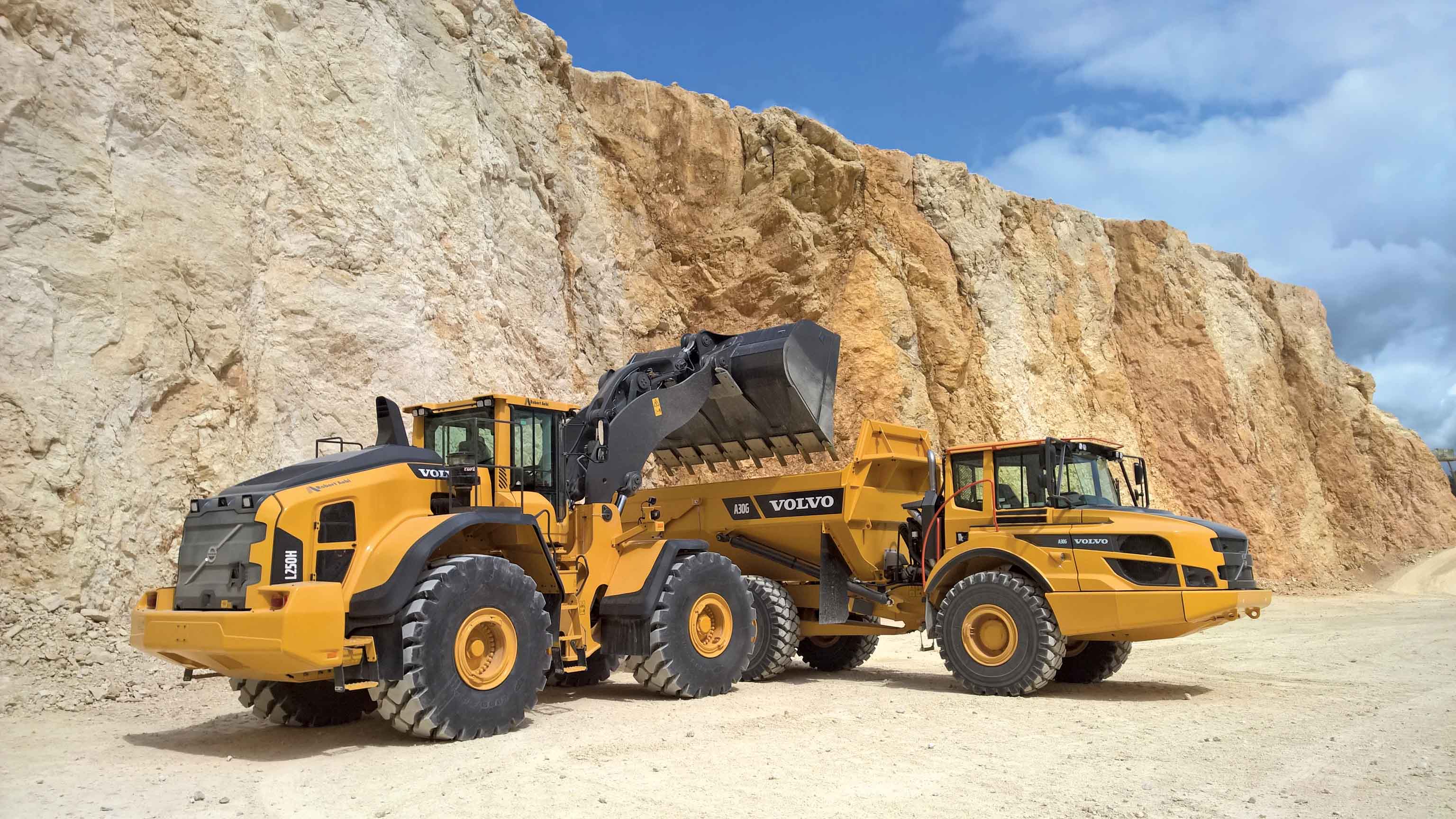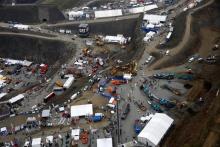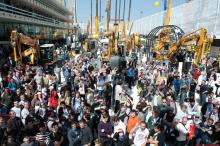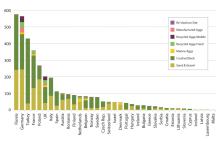
In Germany some 1,600 companies, with approximately 3,200 plants and 27,000 employees, are working to supply an estimated annual demand for about 500 million tonnes of gravel, sand, silica sand and natural stone products for building and other industries.
It also points out that the construction industry, and all its related services, generates around €443 billion, of which the aggregates industry in turn generates €3.1 billion.
It says the importance of the aggregates industry to the construction sector, which employs some 4.7 million people, “is immense.”
And the Mining Association, affiliated to the
There is also optimism that 2017 will bring a return to profit, and as regards the global market, analysts are expecting things to improve in 2016-2017. One reason for the cautious optimism is
“Experience shows that many customers delay purchasing decisions until bauma, where they can first get an overview of the world market offering,” says the show’s organisers,
However, construction appears to be “roaring ahead” and is the basis for the purchase of much of the equipment, including that related to aggregate production.
The VDMA Mining Association expects that demand for the metallic but also mineral raw materials extracted in hard-rock mining will increase substantially as a result of a global expansion in alternative methods of energy production. Another reason for this cautious optimism, says Dr Michael Schulte Strathaus, chairman of the Mining Association, is the need for raw material producers to reduce costs. “In order to achieve profits in the current low-price environment, they have to increase the efficiency of their machinery and plant, and thereby reduce their costs.”
The sector seems, therefore, to be regaining optimism in time for bauma in Munich (11-17 April, 2016), and that is also being backed up by the registrations coming in from exhibitors in this area.
Mareile Kästner, exhibition director of bauma, explains: “The current difficult situation in the sector is not being reflected in the registration figures for exhibitors at bauma. The interest from mining companies and manufacturers of mining products in exhibiting at bauma is still very high.”
For example, among those unveiling new equipment at bauma will be German manufacturer
As the customer wants to process particularly clayey material, a two-stage wobbler feeder is used here.
The approximately 160tonne plant is driven by a diesel-electric drive and can crush up to 600tonnes of material/hour.
At Volvo Construction Equipment, which is also unveiling new equipment at bauma, Christian Krauskopf, business director for Germany at
“Looking at the German business you can say that about 65% of the total equipment is compact equipment. In 2015 it was close on 70% for compact equipment, so it is round about 19,000 units that are going into this compact business.”
He says that at present there is a lot of housebuilding in Germany, particularly in the south and this requires quarries and aggregates.
“In addition there is a lot of infrastructure renewing. We have a lot of highways that are old, and where we are putting a lot of money, especially this year. After 2018 the German government will increase the budget by €2.1 billion.
“It is really booming in the south of Germany. The A8 from Stuttgart to Munich is a completely new highway. It was two lanes and it is now three with a safety lane. There is also Stuttgart 21, the new train track from Ulm to Stuttgart.
“We have a very good position on wheeled loaders and a very good position on articulated haulers in Germany.
“That is where we are coming from. That is our core business.
“We see a very positive beginning to the year. Looking into a crystal ball we expect not a big boom at the end of the year. It will be not much more than 28,000 units in Germany, which is already on a very high level.”
Meanwhile, German group Heidelberg Cement says significant drivers behind its substantial increase in operating income in 2015 were its programmes to improve efficiency and margins; price increases in key markets; energy costs that were slightly below the previous year, and positive exchange rate effects due to the weakening of the euro.
“2015 was by far the best year for
The company says the rise in cement deliveries in North America and Africa almost compensated for the decrease in Europe and Asia. In readymixed concrete, the contraction of the Asian market was more than offset by the positive development of sales volumes in Eastern Europe, particularly in Poland and Georgia, and in North America.
The growth in aggregates sales volumes can be attributed to the favourable trend in North America and Eastern Europe. Business development in Western and Northern Europe during 2015 benefited from the continued recovery in demand for building materials in the United Kingdom, which was driven by private residential construction and large infrastructure projects in London.
It continues: “In contrast, the development of sales volumes in Germany was not able to fully match the strong previous year’s level. The colder winter weather at the beginning of the year, in comparison with the previous year, and a slowdown in commercial construction were among the decisive factors.”
Other major manufacturers are also finding success in Germany, including
Founded in 1985 and based in Kretz, south of Cologne, Bierbrauer & Sohn, is a diversified company. Besides crushing contracting, including recycling, the company is active in renting equipment, selling second-hand machines, earthmoving and transportation.
Today, the company crushes 350,000–400,000tonnes/ year, which includes supporting stationary plants and the handling of recycle crushing contracts. The local stone around Kretz is challenging to crush because of a mixture of layered lava and basalt.
Markit Economics, a leading global diversified provider of financial information services, says in its latest report, The Germany Construction PMI (Purchasing Managers’ Index), that headline construction PMI rose to a near five-year high of 59.6.
The report is based on original survey data collected from a representative panel of over 200 companies based in the German construction sector.
Data, collected at midmonth, asks respondents to compare a variety of business conditions with the situation one month ago. A reading of below 50.0 indicates that the economy is generally declining, above 50.0 that it is generally expanding and exactly 50.0 indicates no change on the level recorded the previous month. Its report also shows that housing output, new orders and employment growth at record highs.
In summary it says that the German construction sector remained in good health in February, with building activity continuing to rise strongly. Moreover, companies reported the sharpest increases in employment and new business in the survey’s history, and optimism towards the 12-month outlook hit a near ten-year high.
“Germany’s construction sector powered ahead in February with the headline PMI reaching its highest level in nearly five years. Residential building activity remained the main pillar of the upturn, increasing at the strongest rate in the sixteen-and-a-half-year survey history,” says Oliver Kolodseike, economist at Markit.
“Meanwhile, record rises in new business and employment are supportive of hopes that growth can be sustained.
This was also underpinned by companies’ sentiment improving markedly as higher demand (partly linked to the refugee crisis) and housing shortages in metropolitan areas are expected to boost construction activity over the coming year. Overall, the data dovetail nicely with the latest monthly report from Bundesbank in which they state that the upturn in the construction sector should continue at the start of the year.”









